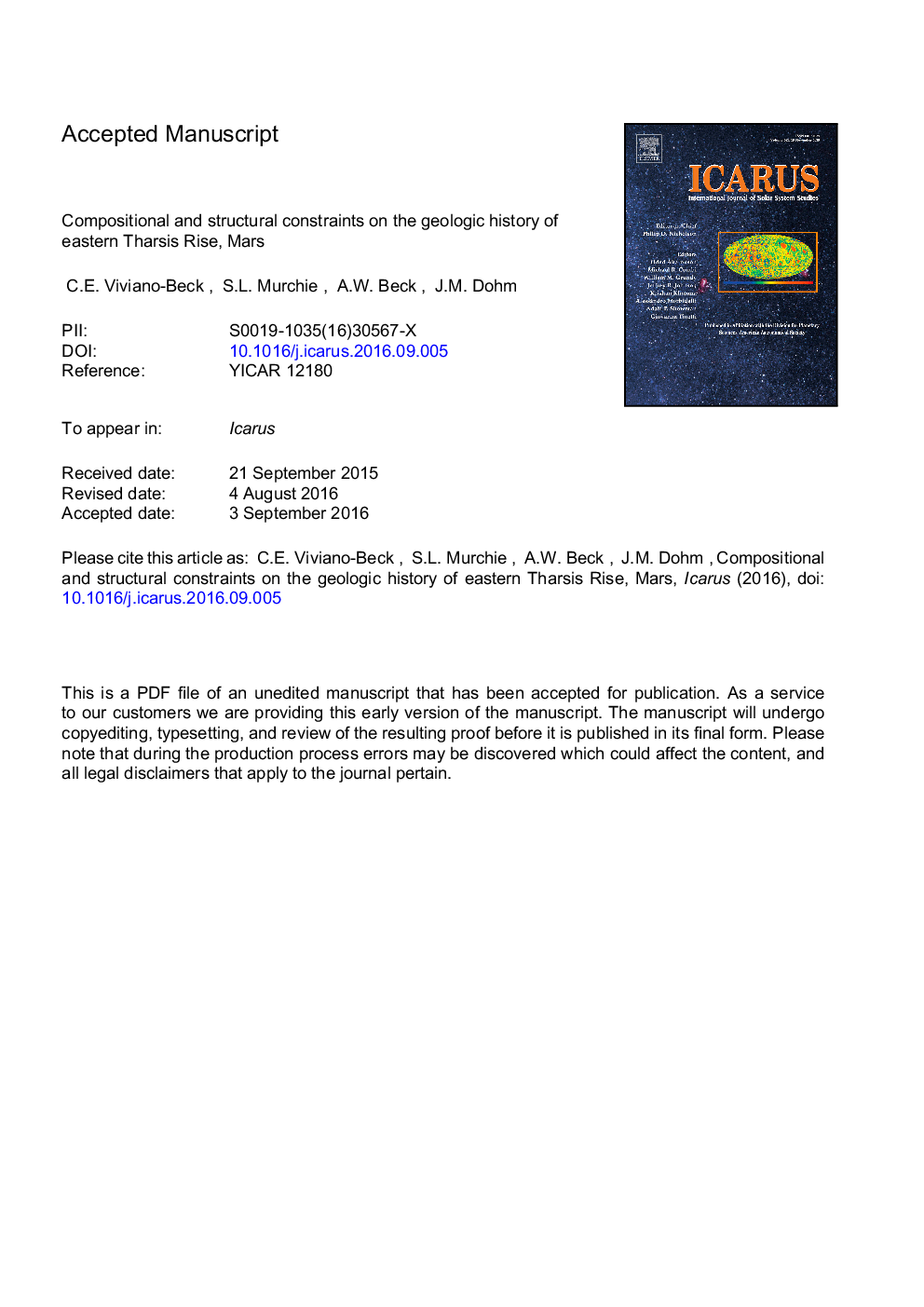| Article ID | Journal | Published Year | Pages | File Type |
|---|---|---|---|---|
| 5487126 | Icarus | 2017 | 50 Pages |
Abstract
Identification and mapping of distinct compositional units using high-resolution orbital imagery of the walls of Valles Marineris, Mars, provide key structural and environmental constraints on the geologic history of the eastern Tharsis Rise. Our results corroborate an overall vertical structure of the upper crust consistent with that inferred from previous studies. An upper unit spectrally consistent with basalt that has variable thickness is overlain on an early to possibly pre-Noachian substrate. The pre-/early-Noachian material is heterogeneous, dominated by low-calcium pyroxene-rich material but ranging locally from feldspathic to and olivine-rich. Aqueous alteration of pre-/early-Noachian rock to dominantly Fe/Mg-smectite is widespread and observed along the chasma walls from â4 to 1Â km. However phyllosilicates outcrop discontinuously, suggesting that they were emplaced via impact excavation of even older altered material, or formed by non-uniform alteration driven by impact- or magma-related hydrothermal activity. A distinct, higher-temperature alteration assemblage identified by the presence of chlorite, zeolite, and associated carbonate (+/âserpentine) occurs on both the north and south walls of eastern Coprates Chasma in a confined longitudinal band, where the eastern margin of the Thaumasia Plateau intersects Valles Marineris. These secondary minerals are concentrated within a heavily fractured band exposed at a regional tectonic boundary along the margin of the Thaumasia Plateau, and likely record a regional zone of elevated crustal heat flow and fluid circulation. The generally north-south trending band exhibiting this distinct assemblage serves as a tracer for tectonic deformation; its continuity across Valles Marineris is incongruous with previously suggested lateral slip along the margin of a 'megaslide', and constrains left-lateral transtensional faulting to less than â¼25-50Â km. Mapping of compositionally distinct outcrops to the west also reveals localized uplift in western Coprates Chasma, suggesting thrust faults underlying wrinkle ridges. In western Valles Marineris, the upper basalt layer thickens dramatically, supporting either occurrence of a large, infilled basin to the west, or down-dropping and volcanic burial of material near Melas/Candor Chasma, the latter consistent with a constructional origin of the Tharsis Rise.
Keywords
Related Topics
Physical Sciences and Engineering
Earth and Planetary Sciences
Space and Planetary Science
Authors
C.E. Viviano-Beck, S.L. Murchie, A.W. Beck, J.M. Dohm,
